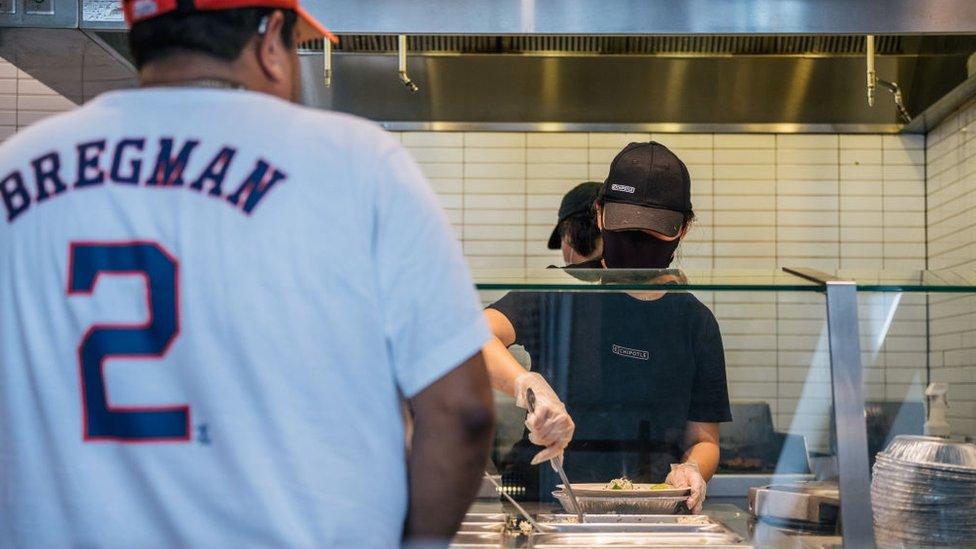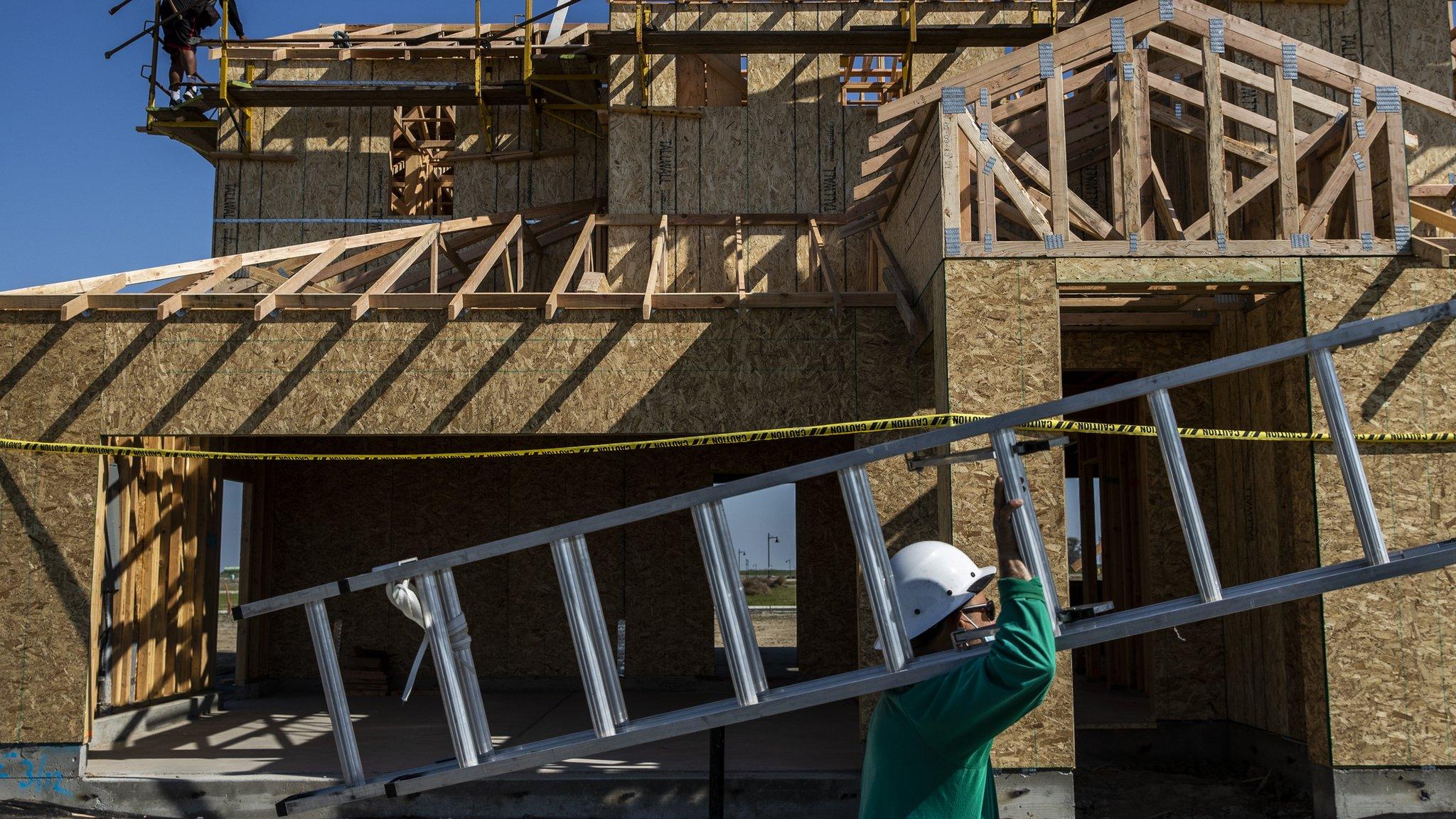Used car costs drive US prices higher in May
- Published

US inflation continued to surge in May as prices for used cars and energy picked up.
Consumer prices jumped 5% in the 12 months to the end of May, up from 4.2% the month before.
The new figures from the US Labor Department mark the biggest year-on-year increase since August 2008.
It comes amid fears that rising prices could prompt the US central bank, the Federal Reserve, to push up interest rates.
Some analysts have said, however, that inflation could be rising because of temporary factors such as supply bottlenecks.
Inflation, which measures the rate at which the prices for goods and services increase, was pushed up by higher prices for used vehicles last month.
The price of second-hand cars and lorries jumped 7.3%, accounting for about one-third of the overall increase, the Labor Department said.

What is inflation?
Inflation is the rate at which the prices for goods and services increase.
It's one of the key measures of financial well-being because it affects what consumers can buy for their money. If there is inflation, money doesn't go as far.
It's expressed as a percentage increase or decrease in prices over time. For example, if the inflation rate for the cost of a litre of petrol is 2% a year, motorists need to spend 2% more at the pump than 12 months earlier.
And if wages don't keep up with inflation, purchasing power and the standard of living falls.
Read more about inflation - and why it matters - here.

The jump was also down to the cost of airline tickets and clothes increasing, with demand for consumer goods and travel recovering as coronavirus-related restrictions ease.
The "core price index", which strips out food and energy costs that can be more volatile, increased 3.8% in May from the year before.
The jump seen last month could also be fuelled by the fact that prices dropped off at the height of the pandemic last year, so the increase seen now from 2020 is bigger.
'Uncertain' outlook
Willem Sels, chief investment officer for private banking and wealth management at HSBC, said the headline inflation figure was "bound to rise".
"The good news is that these effects should fade with time, which should lead inflation to fall, potentially even starting next month," he said.
But he cautioned that the outlook remained uncertain.
Inflation is breaching the Federal Reserve's target of 2%, raising fears among investors it might need to put up interest rates more quickly than had been expected to cool things down.
In March, US President Joe Biden signed a $1.9tn (£1.4tn) economic relief bill that saw the government send $1,400 cheques to most Americans, and last month he set out plans for more government spending on jobs, education and social care.
It has led to a build-up of savings which is now being spent as the economy reopens, driving prices higher.

Fast food chain Chipotle has already raised prices to pay for wage increases and higher food costs.
Robert Alster, chief investment office at Close Brothers Asset Management added: "With prices rising, economists are left with a key question, what is driving the surge in inflation and, critically, is it transitory or persistent?
"The reality is there are a number of factors at play... all underpinned by a surge in demand. What is abundantly clear is that the Fed, and policymakers around the world, will be keeping a close eye on US inflation in the coming months to see whether this is a trend."
The Fed has previously insisted that increases would be temporary before levelling out.
But rising prices have already prompted some businesses to take action.
Fast-food chain Chipotle, for example, recently raised its menu prices by about 4% across many markets to cover the costs of wage increases as well as higher food prices, its chief financial officer said this week.
Related topics
- Published7 June 2021
- Published17 March 2021
